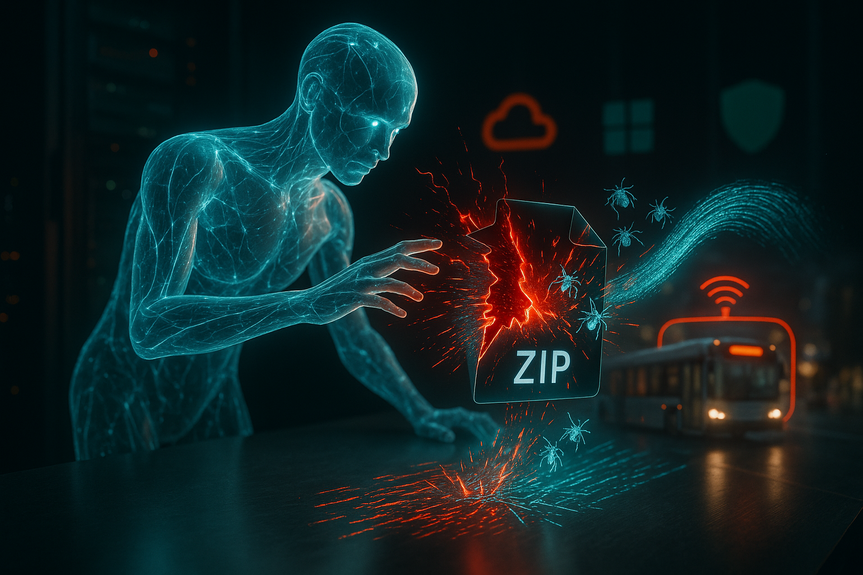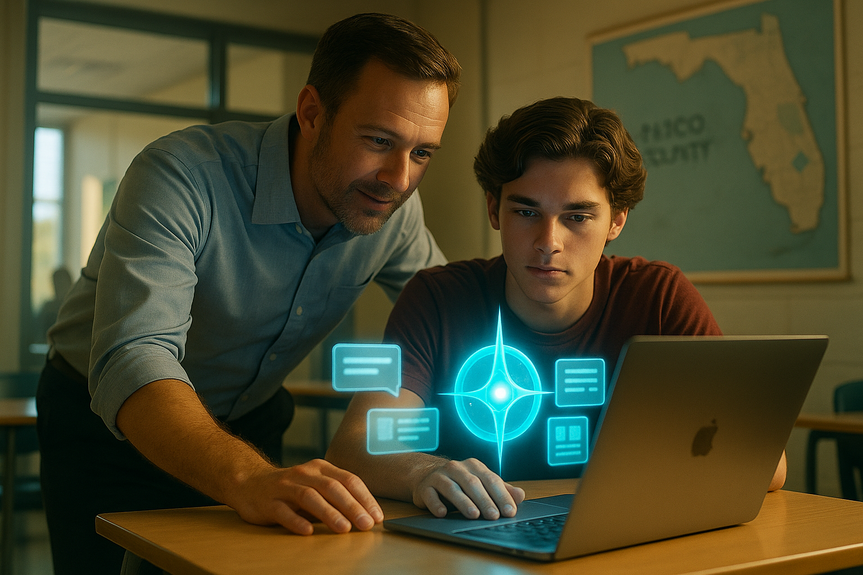
AI News
07 Nov 2025
Read 18 min
AI event planning guide for Gen Z How to Boost Engagement
AI event planning guide for Gen Z enables fast, inclusive, tailored events that boost engagement now.
AI event planning guide for Gen Z: Core principles
Design for short attention and heavy screen time
Keep sessions tight. Split long talks into clear segments. Use visuals over walls of text. Add natural breaks. Offer “micro-moments” for questions and polls every 7–10 minutes. The aim is steady engagement, not a single big burst.Make everything accessible by default
Offer live captions and clear audio in every room. Add real-time translation for global guests. Use consistent layouts in slides and apps. Keep color contrast strong. Avoid flashy motion and loud stings. Accessibility is not an add-on; it is a basic need for a large share of your audience.Give choices for input and output
Some people learn by reading. Others learn by listening or doing. Provide content in many forms:- Slides with speaker notes
- Live captions and transcripts
- Audio replays
- Short video summaries
- Interactive polls and Q&A
Personalize without overwhelming
Use AI to suggest sessions, routes, or content. Keep it simple and clear. Offer three strong picks, not thirty. Show why each pick fits: role, interest, or skill level. Let attendees opt in to deeper suggestions.Invite voice, not just views
Two-way features like live polls, chat corridors, and question upvoting increase focus. Use short, frequent prompts. Summarize back what the room says with AI summaries on screen. People feel seen when their input shapes the flow.Essential AI tools and how to use them
Live captions and translation
What it does: Converts speech to text on screens, streams, and apps. Can translate into many languages in real time. Why it matters: Many attendees now turn on captions even at home. Captions help focus, increase comprehension in noisy halls, and support neurodivergent guests. How to deploy:- Use on every stage, not just “accessibility” rooms.
- Place caption displays where line-of-sight is easy from all seats.
- Test accents, jargon, and brand names in advance.
- Offer a QR code to open captions on personal devices.
AI note-takers and micro-summaries
What it does: Records sessions, creates key points, quotes, and action items. Can generate a 1-minute recap video or a 100-word brief. Why it matters: Gen Z favors short, visual, and shareable content. Summaries help late arrivals and keep multi-track events coherent. How to deploy:- Set up a note-taker per room with speaker consent.
- Post 100-word takeaways within 10 minutes of session end.
- Push a “What you missed” digest each afternoon.
- Turn top sessions into short TikTok-style vertical clips.
Personalization engines for agendas
What it does: Suggests sessions, booths, and people to meet based on goals, role, or skills. Why it matters: People avoid choice overload. Smart picks increase session fit and reduce no-shows. How to deploy:- Ask three questions at registration: role, goals, and topic interest.
- Offer a “lite” plan plus the option to explore more.
- Show a reason for each suggestion to build trust.
AI chat assistants with safe knowledge
What it does: Answers event questions from a curated knowledge base: schedules, maps, speaker bios, venue rules. Why it matters: Attendees expect immediate answers. A chat assistant cuts desk lines and frees staff for complex issues. How to deploy:- Build a simple chatbot trained on the event site, PDFs, and FAQs.
- Add clear escalation to a human when the bot is unsure.
- Track unanswered questions to improve content and signage.
Slide cleanup and inclusive design
What it does: Checks slides for font size, contrast, reading level, and jargon. Can rewrite bullets and add alt text. Why it matters: Many decks are hard to read in large rooms. Clean slides increase understanding and reduce fatigue. How to deploy:- Give speakers a template with built-in contrast.
- Run decks through an AI checker two weeks before the event.
- Limit each slide to one idea and a few clear visuals.
Engagement analytics and heatmaps
What it does: Measures attendance, dwell time, poll response, caption use, and chat volume. Why it matters: You can adjust the event in real time. If a hall shows low dwell time, you can shorten formats or add Q&A. How to deploy:- Set benchmarks before the event.
- Monitor a live dashboard during day one.
- Announce changes transparently if you adjust the program.
Step-by-step plan to put it all together
60–90 days out: foundations
- Define goals: learning, leads, community, or launches.
- Map audiences by role and skill level.
- Select AI vendors for captions, summaries, chat, and analytics.
- Draft an accessibility plan aligned with WCAG guidelines.
- Create a consent policy for recording and AI processing.
30–45 days out: content and testing
- Train the event chatbot on verified content only.
- Run a caption and translation test with real speakers.
- Collect speaker decks and run the slide checker.
- Plan micro-summaries and assign owners per room.
- Design short-form clips and templates for social posts.
10–20 days out: rehearsal
- Hold a full tech rehearsal with caption feeds, displays, and backup audio.
- Test Wi‑Fi load with mobile caption viewing.
- Dry-run the “day one dashboard” with sample data.
- Prepare quiet rooms and sensory maps.
- Confirm signage for wayfinding and QR codes.
Event days: run and improve
- Start each session with a screen showing how to open captions and translations.
- Post a 100-word recap within 10 minutes after each session.
- Watch the dashboard and adjust pacing or room assignments as needed.
- Capture top moments for same-day social clips.
Post-event: extend the value
- Send a “Highlights in 5 minutes” video and a personalized learning path.
- Turn Q&A logs into a living knowledge base and follow-up webinars.
- Share a transparency report on AI use and data handling.
- Review metrics against goals and note changes for next year.
Accessibility and neurodiversity checklist
Environment and sensory needs
- Provide quiet rooms with dim lighting and soft seating.
- Share a sensory map that notes loud zones and flashing lights.
- Offer lanyard options for “no photos,” “no handshake,” and “okay to network.”
- Keep music low during transitions; avoid strobe effects.
Content clarity
- Use plain language; define any acronyms on first use.
- Limit slides to 6–8 lines with large fonts.
- Provide transcripts and alt text for images.
- Allow attendees to download materials in advance.
Interaction and pacing
- Give time warnings before Q&A or breakouts.
- Offer written ways to ask questions (app or cards) as well as oral.
- Space sessions to allow rest and bio breaks.
- Record everything so people can catch up without stress.
Data privacy, safety, and trust
Consent and control
- Get clear consent for recording and AI processing at registration.
- Provide opt-out options for face capture or public sharing.
- Tag sessions as “recorded” or “not recorded” at the door.
Data handling
- Use vendors that encrypt data and meet regional privacy laws.
- Restrict training of AI models to your approved files; avoid open internet training on attendee data.
- Set short retention periods for raw audio and chat logs.
Accuracy and bias
- Review AI summaries for errors on high-stakes topics.
- Use diverse test voices and accents when tuning caption models.
- Audit personalization to avoid narrow or stereotyped suggestions.
Measuring success and ROI
Track a mix of experience and business outcomes:- Accessibility: caption usage rate, translation usage, transcript downloads
- Engagement: poll response rates, Q&A volume, session dwell time
- Learning: quiz scores, micro-summary opens, follow-up content clicks
- Networking: matches made, meetings held, chat assistant helpfulness score
- Satisfaction: NPS, clarity ratings, “felt included” score
- Efficiency: average time to answer a question, staff desk queue length, content reuse rate
Common pitfalls and how to avoid them
Too many tools
Problem: You add five apps and confuse attendees. Fix: Pick a single event app with built-in captions, chat, and agenda.Unclear signage
Problem: Guests do not find captions, translation, or quiet rooms. Fix: Place clear, high-contrast signs and simple QR codes everywhere.Low audio quality
Problem: Captions fail with echo or poor mics. Fix: Use proper mics, test gain levels, and treat rooms for sound.No backup plan
Problem: Wi‑Fi drops and tools fail mid-session. Fix: Keep offline caption feeds, extra hotspots, and a printed quick guide.Privacy surprises
Problem: Attendees feel ambushed by recording or AI use. Fix: Explain AI clearly up front and give opt-out choices.Sample two-day program using AI
Day one
- Opening keynote with live captions on main screen and mobile.
- 10-minute micro-classes between sessions with time-boxed Q&A.
- Chat assistant answers “Where next?” and “How to find quiet room?”
- Afternoon digest: three 1-minute recap videos plus a “you might like” list.
Day two
- Breakouts grouped by skill level; app nudges attendees to the best fit.
- Live polls guide the panel topics in real time.
- Final session: AI compiles top questions and actions from both days.
- After the event: attendees receive a personal learning path and key clips.
Working with partners
When you choose production partners, look for teams that understand both stagecraft and software. Ask for hands-on demos with your actual content. Request references from events with a similar audience mix. Make sure they can provide trained operators for captioning and translation, not just licenses. If they cite strong survey insights about Gen Z, ask how they apply those insights in room design, signage, and content workflows.Budget tips
- Start with the tools that touch every attendee: captions, clear signage, and summaries.
- Cut low-impact swag to fund real-time translation for keynotes.
- Reuse AI-generated clips across marketing, sales, and internal training.
- Measure cost per engaged minute, not just cost per attendee.
Bringing it back to outcomes
Your event should help people learn, meet, and make decisions. AI can reduce the friction that gets in the way. It can also extend your reach to people who might struggle with fast speech, dense slides, or noisy rooms. When you build for clarity and choice, you make a better experience for everyone, not only Gen Z. If you need a simple starting point, begin with three moves: put captions everywhere, create fast micro-summaries for every session, and add a knowledge-based chat assistant. These three steps pay off on day one and set you up for smarter personalization later. Conclusion: Your playbook is simple. Reduce friction. Offer choices. Use data to improve. This AI event planning guide for Gen Z turns those rules into action. Start with accessibility, add smart personalization, and measure what matters. You will create events that people enjoy, remember, and share.(Source: https://finance.yahoo.com/news/encore-leverages-ai-tools-reshape-153000629.html)
For more news: Click Here
FAQ
Contents






